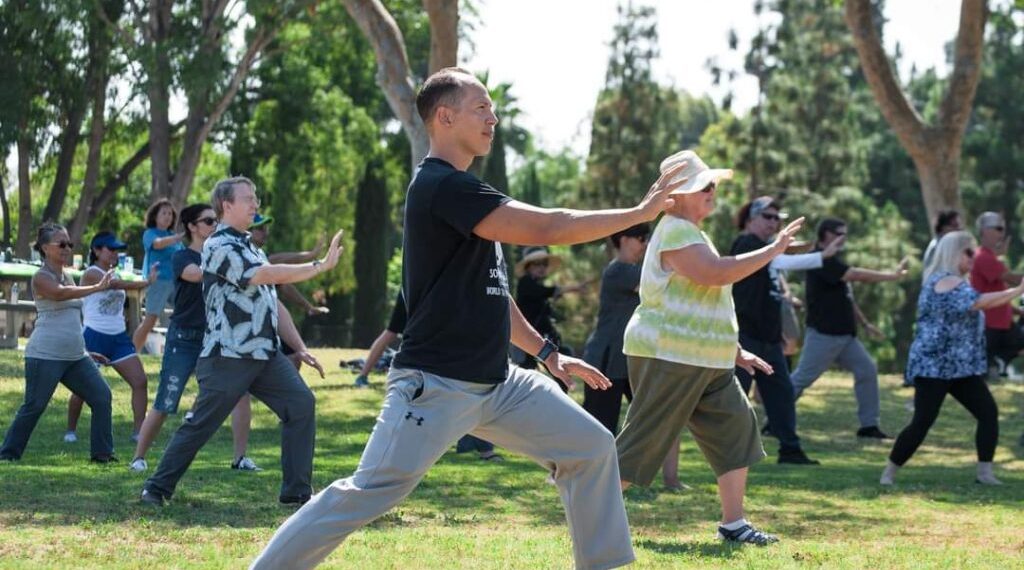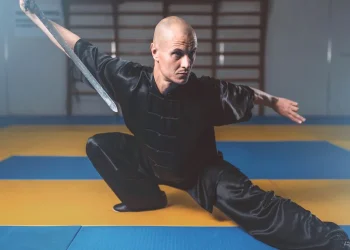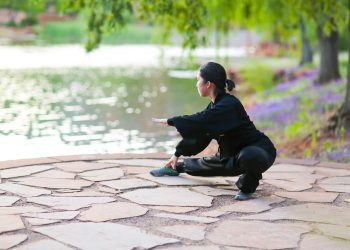Tai Chi walking, often called “Tai Chi ruler walking” or simply “walking meditation,” represents one of the most accessible yet profound practices within the broader Tai Chi tradition. While most people associate Tai Chi with the slow, flowing hand forms performed in parks and studios worldwide, Tai Chi walking focuses specifically on transforming one of our most basic daily activities into a meditative, health-enhancing practice. For those seeking to improve balance, reduce stress, or simply move with greater awareness and grace, Tai Chi walking classes offer an excellent entry point into mindful movement.
Understanding Tai Chi Walking
Before diving into what classes entail, it’s helpful to understand what makes Tai Chi walking distinct from ordinary walking or even typical Tai Chi forms. This practice applies the fundamental principles of Tai Chi—slow, deliberate movement, deep breathing, mental focus, and awareness of weight shifting—specifically to the act of walking. Practitioners learn to move with heightened awareness of their body mechanics, maintaining a relaxed yet upright posture while coordinating breath with steps. The result is a form of moving meditation that can be practiced anywhere, anytime, making it remarkably practical for modern life.
Unlike high-impact exercise that can strain joints and muscles, Tai Chi walking emphasizes gentle, controlled movement that works with the body’s natural alignment. This makes it particularly valuable for older adults, people recovering from injury, or anyone seeking a low-impact way to improve physical fitness and mental clarity. The practice has roots in traditional Chinese martial arts and healing traditions, where masters recognized that proper walking formed the foundation for all other movements.
What to Expect in Tai Chi Walking Classes
When you attend your first Tai Chi walking class, you’ll likely find an environment quite different from a typical fitness class. Most instructors begin with a brief centering period, inviting students to become present and let go of external distractions. This might involve standing meditation, gentle breathing exercises, or simple body awareness practices that help you tune into your current physical and mental state.
The core of the class typically involves learning and practicing specific walking patterns and techniques. Your instructor will demonstrate the basic stance and posture, emphasizing a relaxed but aligned body with knees slightly bent, weight sinking into the legs, and the spine naturally elongated. You’ll learn to feel your connection with the ground, often described as “rooting,” which provides both physical stability and a meditative focus point.
As you begin moving, instruction focuses on the mechanics of weight shifting. Rather than simply stepping forward, you’ll learn to consciously transfer weight from one leg to the other, maintaining balance and control throughout the transition. This might feel unnaturally slow at first—indeed, a single step might take several seconds—but this deliberate pace allows you to notice habits and patterns you’ve never recognized in your everyday walking.
Classes typically progress through various walking patterns. You might practice walking in straight lines, circles, or figure-eights. Some instructors incorporate variations like backward walking or side-stepping, each offering different challenges and benefits. Throughout these exercises, emphasis remains on coordinating movement with breath, maintaining proper posture, and cultivating what Tai Chi practitioners call “sung”—a state of relaxed alertness where the body remains soft yet responsive.
Most classes run between 45 minutes to an hour, though some intensive workshops might extend longer. The atmosphere tends to be quiet and contemplative, with instructors speaking softly and students focused inward. However, this doesn’t mean classes lack warmth or community. Many students find that the shared experience of mindful practice creates genuine connections, and instructors often encourage questions and discussion.
Finding Quality Instruction
The quality of your Tai Chi walking experience depends heavily on finding a knowledgeable, experienced instructor. Unfortunately, because Tai Chi has gained mainstream popularity, the market includes both genuine experts and those with minimal training claiming expertise. Knowing how to evaluate potential teachers can save you time, money, and frustration.
Start by researching an instructor’s background and credentials. Quality instructors typically have studied for many years under a recognized master, often within a specific lineage or tradition. While certification programs exist, they vary widely in rigor. More important than certificates is evidence of serious, long-term practice and teaching experience. Look for instructors who can clearly articulate their training background and who continue studying with senior teachers.
When possible, observe a class before committing. Watch how the instructor teaches—do they provide clear, detailed explanations? Can they demonstrate the movements with obvious skill and control? Do they offer individual corrections and adjustments? Quality instructors balance precise technical instruction with attention to each student’s unique needs and limitations. They should emphasize proper alignment and safety while creating an encouraging, non-competitive atmosphere.
Personal recommendations carry significant weight in finding good instruction. Ask at local community centers, yoga studios, martial arts schools, or wellness centers for referrals. People passionate about their Tai Chi practice are usually happy to share information about their teachers. Online reviews can provide helpful insights, though look for specific comments about teaching quality rather than just general praise.
Consider the instructor’s teaching philosophy and approach. Some emphasize the martial arts aspects of Tai Chi, others focus primarily on health benefits, and still others approach it as spiritual practice. All these perspectives have validity, but you’ll benefit most from instruction aligned with your own interests and goals. Don’t hesitate to ask potential instructors about their approach and what they emphasize in their teaching.
Online Versus In-Person Classes
The rise of online learning has brought Tai Chi walking instruction into homes worldwide, but this convenience comes with important trade-offs to consider. In-person instruction offers irreplaceable advantages, particularly for beginners. A skilled teacher can observe your movement from multiple angles, catching subtle misalignments or tension patterns you wouldn’t notice yourself. They can provide hands-on adjustments, helping you feel correct positioning in a way that verbal instructions alone cannot convey.
The group energy of an in-person class also supports practice in ways that are difficult to replicate online. When surrounded by others moving mindfully, you naturally fall into the contemplative rhythm of the practice. The commitment of traveling to class at a scheduled time helps many people maintain consistency, and the social connection with fellow students provides motivation and community.
However, online classes offer genuine benefits that shouldn’t be dismissed. They provide access to expert instruction regardless of geographical location—crucial for those living in areas without local teachers. The flexibility to practice on your own schedule accommodates busy lifestyles, and the ability to replay lessons helps reinforce learning. For people with mobility limitations or social anxiety, practicing at home might feel more comfortable than attending a studio class.
High-quality online instruction requires good production values. Look for classes with clear video showing the instructor from multiple angles, good audio for verbal instruction, and well-organized content that progresses logically. Live online classes offering real-time feedback provide more value than pre-recorded videos, though both have their place. Some platforms allow you to submit videos of your practice for instructor review, bridging some of the feedback gap.
Many students find a hybrid approach most effective—attending in-person classes when possible while supplementing with online resources for home practice. This combination provides the essential feedback and correction from direct instruction while allowing for more frequent practice. If starting online, plan to attend in-person instruction eventually, even if just for a workshop or intensive, to ensure you’re developing correct habits from the beginning.
Choosing the Right Class for You
With various styles and approaches to Tai Chi walking available, selecting the right class requires honest assessment of your goals, fitness level, and learning preferences. Begin by clarifying what you hope to gain from the practice. Are you primarily interested in improving balance and physical stability? Managing stress and anxiety? Exploring meditation and mindfulness? While Tai Chi walking offers all these benefits, different classes may emphasize different aspects.
Consider your current physical condition and any limitations. Tai Chi walking is generally very safe and adaptable, but some classes may be more appropriate for your situation. Classes specifically designed for seniors or people with limited mobility progress more slowly and include more modifications. If you’re recovering from injury or managing chronic conditions, discuss your situation with potential instructors before enrolling to ensure they can accommodate your needs.
The class size affects the learning experience significantly. Smaller classes allow more individual attention and feedback, while larger classes offer more community energy and often lower costs. For beginners, classes with fewer than fifteen students generally provide better learning conditions, as the instructor can observe and correct each person’s practice more regularly.
Schedule and location matter more than many people initially realize. A wonderful class that’s difficult to reach or scheduled inconveniently will be hard to attend consistently, and consistency is key to experiencing real benefits. Sometimes a good local class you can attend regularly will serve you better than an exceptional class that’s harder to access. Most instructors recommend practicing at least twice weekly to develop skill and see meaningful results.
Cost varies considerably, from free community classes to premium private instruction. While price doesn’t always reflect quality, extremely cheap or free classes may be taught by less experienced instructors or offer less personalized attention. Conversely, expensive doesn’t guarantee excellence. Many instructors offer trial classes or discounted first sessions, allowing you to experience their teaching before committing financially.
Don’t overlook the importance of personal connection with your instructor. Even the most accomplished teacher won’t serve you well if their personality or teaching style doesn’t resonate with you. Trust your intuition—if something feels off, keep looking. The student-teacher relationship in Tai Chi carries particular significance, as the practice involves vulnerability, patience, and trust. You should feel comfortable asking questions, acknowledged as an individual, and encouraged in your progress.
Embarking on Tai Chi walking practice represents an investment in your long-term health and wellbeing. The practice offers benefits that accumulate over time—improved balance, enhanced body awareness, stress reduction, better sleep, and a deeper sense of calm and centeredness. However, these benefits require patience and consistent practice.
As you begin, remember that Tai Chi walking is not about achieving perfection but about the journey of continuous learning and refinement. You’re developing new ways of moving and being in your body that differ significantly from habitual patterns formed over a lifetime. Progress sometimes feels slow, but subtle shifts accumulate into meaningful transformation.
Most importantly, approach the practice with curiosity rather than judgment. Each class offers opportunities to discover something new about yourself and your movement. Whether you choose online or in-person instruction, a traditional or modern approach, the key is to begin. Find a class, show up regularly, and give yourself permission to be a beginner. The path of Tai Chi walking has enriched countless lives over centuries—it stands ready to enrich yours as well.






